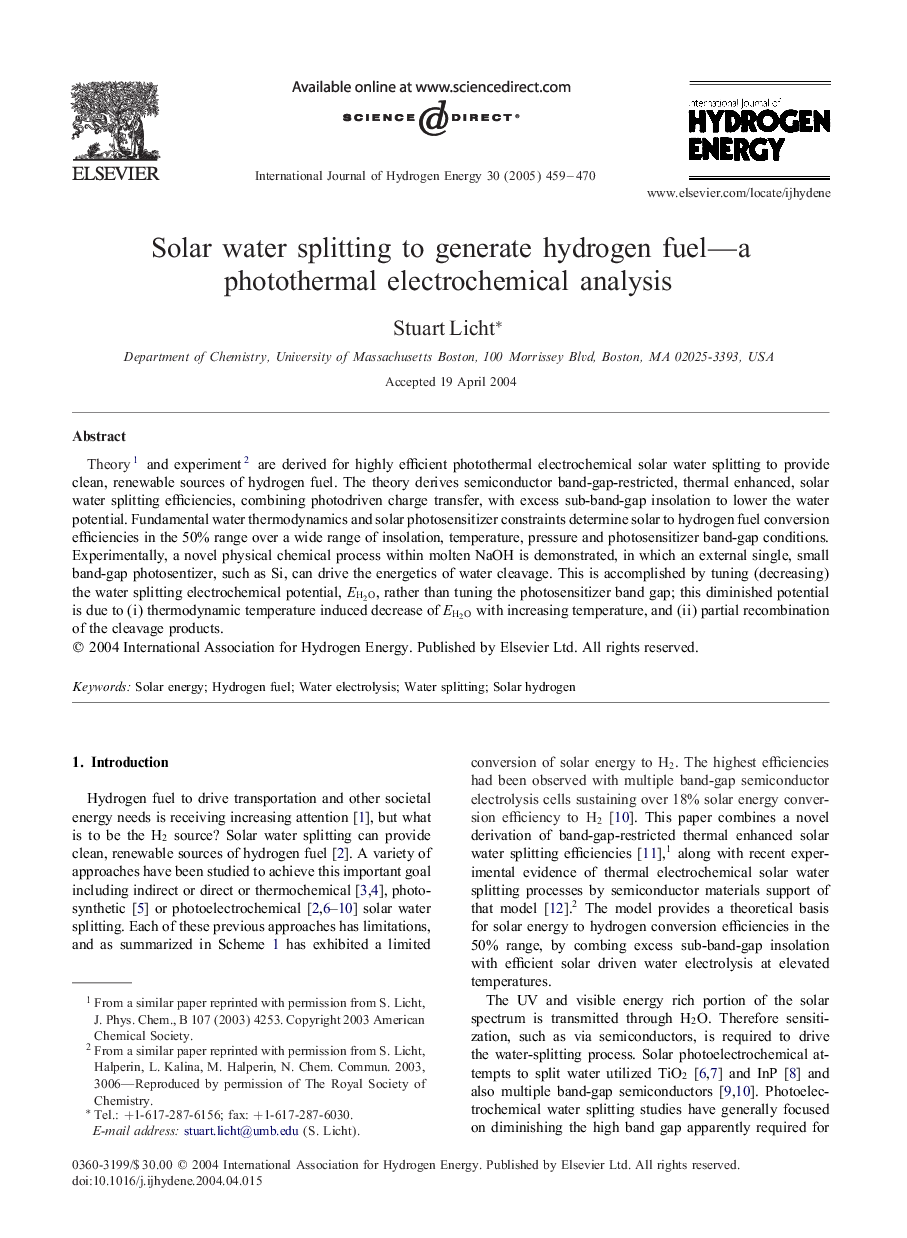| Article ID | Journal | Published Year | Pages | File Type |
|---|---|---|---|---|
| 9759316 | International Journal of Hydrogen Energy | 2005 | 12 Pages |
Abstract
Theory1 and experiment2 are derived for highly efficient photothermal electrochemical solar water splitting to provide clean, renewable sources of hydrogen fuel. The theory derives semiconductor band-gap-restricted, thermal enhanced, solar water splitting efficiencies, combining photodriven charge transfer, with excess sub-band-gap insolation to lower the water potential. Fundamental water thermodynamics and solar photosensitizer constraints determine solar to hydrogen fuel conversion efficiencies in the 50% range over a wide range of insolation, temperature, pressure and photosensitizer band-gap conditions. Experimentally, a novel physical chemical process within molten NaOH is demonstrated, in which an external single, small band-gap photosentizer, such as Si, can drive the energetics of water cleavage. This is accomplished by tuning (decreasing) the water splitting electrochemical potential, EH2O, rather than tuning the photosensitizer band gap; this diminished potential is due to (i) thermodynamic temperature induced decrease of EH2O with increasing temperature, and (ii) partial recombination of the cleavage products.
Related Topics
Physical Sciences and Engineering
Chemistry
Electrochemistry
Authors
Stuart Licht,
